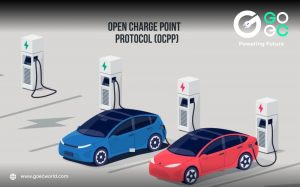As electric vehicles (EVs) become more prevalent, understanding the different EV charging levels is crucial for both current and prospective EV owners. EV charging infrastructure is growing rapidly, making it easier to keep your vehicle powered up. This blog will explain the various EV charging levels, their differences, and their specific uses.
EV Charging Levels Explained
EV charging levels are categorized based on the power output and the speed at which they can charge an EV. These levels are essential for determining how quickly you can recharge your vehicle and where each type of charger is typically found. The three main levels are Level 1, Level 2, and Level 3.
What is Level 1 Charging?
Level 1 charging is the most basic form of EV charging. It uses a standard household outlet (120 volts) and requires no special equipment beyond the charging cable that comes with most EVs.
How Level 1 Charging Works
Voltage: 120 volts (standard household outlet)
Power Output: Typically between 1.3 kW and 2.4 kW
Charging Speed: Adds about 4-5 miles of range per hour
Typical Use Cases and Benefits
Home Charging: Ideal for overnight charging in residential settings. You can plug your EV into any standard outlet in your garage or driveway.
Low Cost: There is no need for additional installation or equipment. Since it uses existing household outlets, there are no extra costs involved.
Convenience: It can use any standard outlet, making it accessible and easy to set up.
Level 1 charging is suitable for drivers who have short commutes and can charge their vehicles overnight. It’s also a good option for backup charging when other options are not available.

What is Level 2 Charging?
Level 2 charging is a step up from Level 1, using a 240-volt outlet, similar to those used by home appliances like dryers and ovens. Level 2 chargers are commonly found in public charging stations, workplaces, and residential settings where faster charging is needed.
How Level 2 Charging Works
Voltage: 240 volts
Power Output: Typically between 3.7 kW and 22 kW
Charging Speed: Adds about 10 – 60 miles of range per hour
Typical Use Cases and Benefits
Home Charging: Faster charging for those with higher daily mileage. It can fully charge most EVs overnight.
Public and workplace charging is common in parking lots, shopping centers, and office buildings. Provides a convenient way for employees and customers to charge their vehicles while they are parked.
Flexibility: It can fully charge most EVs overnight, making it suitable for those who need more range on a daily basis.
What is Level 3 Charging?
Level 3 charging, also known as DC Fast Charging, is the fastest charging option available. It uses direct current (DC) instead of alternating current (AC) and is designed for quick recharges, making it ideal for long trips and commercial use.
How Level 3 Charging Works
Voltage: Typically 400 to 800 volts
Power Output: Ranges from 50 kW to 350 kW
Charging Speed: Adds about 60-200 miles of range in 20-30 minutes
Typical Use Cases and Benefits
Highway Charging Stations: Ideal for long-distance travel. EV owners can quickly recharge their vehicles during a short break.
Commercial Use: Used in fleet operations and public transportation. Ensures that commercial EVs can be rapidly recharged and put back into service.
Rapid Charging: Great for quick top-ups during long journeys, reducing downtime significantly.
Differences Between EV Charging Levels
Here’s a quick comparison:
Speed: Level 1 is the slowest, Level 2 is moderate, and Level 3 is the fastest.
Efficiency: Higher levels offer more efficient charging with less time spent at the charger.
Cost: Installation and operational costs increase from Level 1 to Level 3.
Visual Comparison
To illustrate the differences more clearly:
- Level 1: Adds 4-5 miles of range per hour. Suitable for overnight home charging.
- Level 2: Adds 10-60 miles of range per hour. Common in homes, workplaces, and public charging stations.
- Level 3: Adds 60-200 miles of range in 20-30 minutes. Used in highway stations and commercial settings.
Which Levels of EV Charging are Typically Used for Rapid Charging?
When a vehicle requires a rapid charge, Level 3 charging is typically used. These chargers provide the highest power output and can significantly reduce the time needed to recharge an EV.
Situational Examples
Road Trips: Quick recharges at highway stations allow for continued long-distance travel without long stops.
Commercial Fleets: Fast turnaround for delivery vehicles ensures that they can complete multiple trips within a day.
Public Transport: Efficient charging for buses and other transit vehicles ensures they remain operational throughout the day.
Alternating Current (AC) vs. Direct Current (DC) in EV Charging
EV chargers use either alternating current (AC) or direct current (DC) to charge vehicles. Here’s a basic explanation of the differences:
AC Charging
Level 1 and Level 2: Use AC power.
Conversion: The vehicle’s onboard charger converts AC to DC. This process can be slower and less efficient compared to direct DC charging.
DC Charging
Level 3: Uses DC power directly.
Speed: Faster as it bypasses the onboard charger and sends DC power directly to the battery. This allows for much quicker charging times.
Impact on Charging Speed and Efficiency
AC Charging: Slower due to the conversion process, making it suitable for overnight or extended parking situations.
DC Charging: Faster as it directly charges the battery, making it ideal for quick top-ups and long-distance travel.
Understanding the different EV charging levels is essential for making informed decisions about your EV charging needs. Whether you’re charging at home, at work, or on the go, knowing the capabilities and use cases of Level 1, Level 2, and Level 3 chargers will help you keep your EV ready for any journey.
Choosing the right charging level depends on your driving habits, available infrastructure, and specific needs. As EV technology continues to evolve, having a good grasp of these charging levels will ensure you can take full advantage of the convenience and efficiency that electric vehicles offer.
